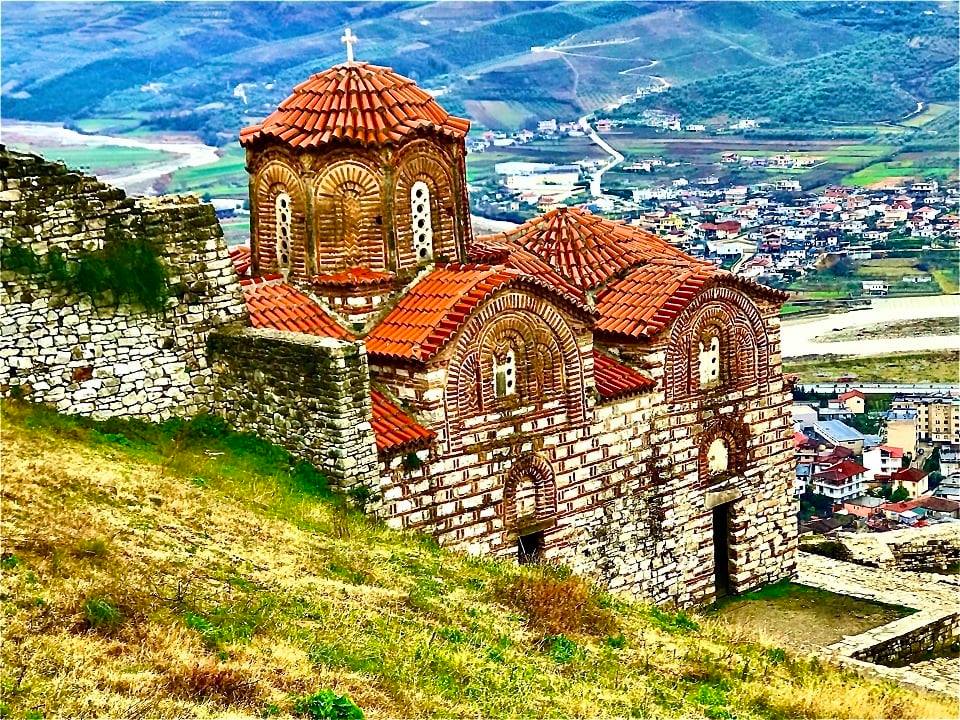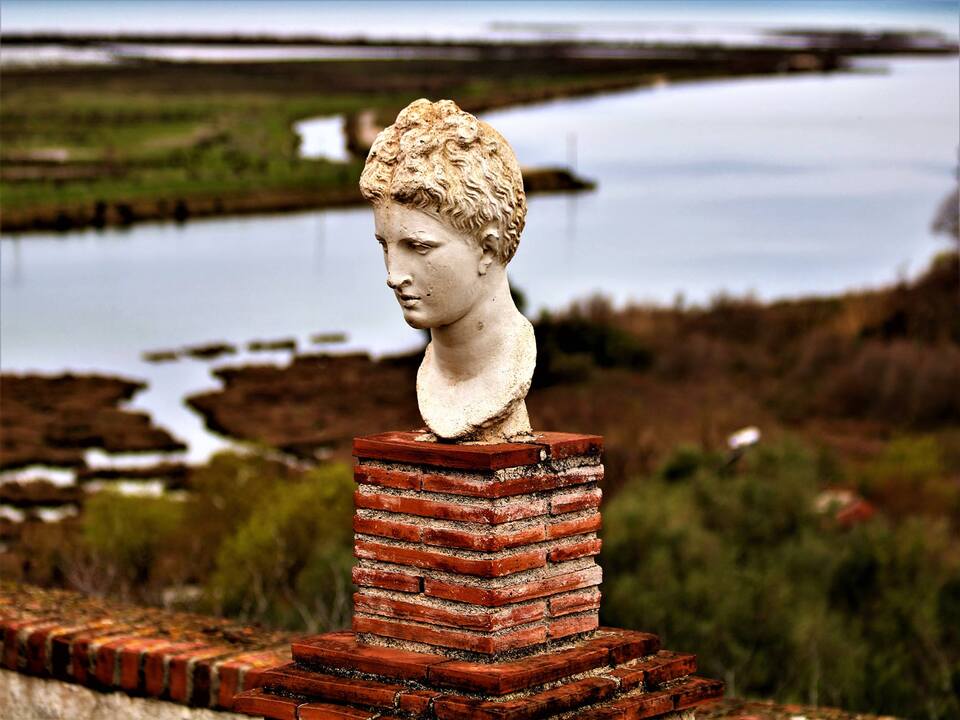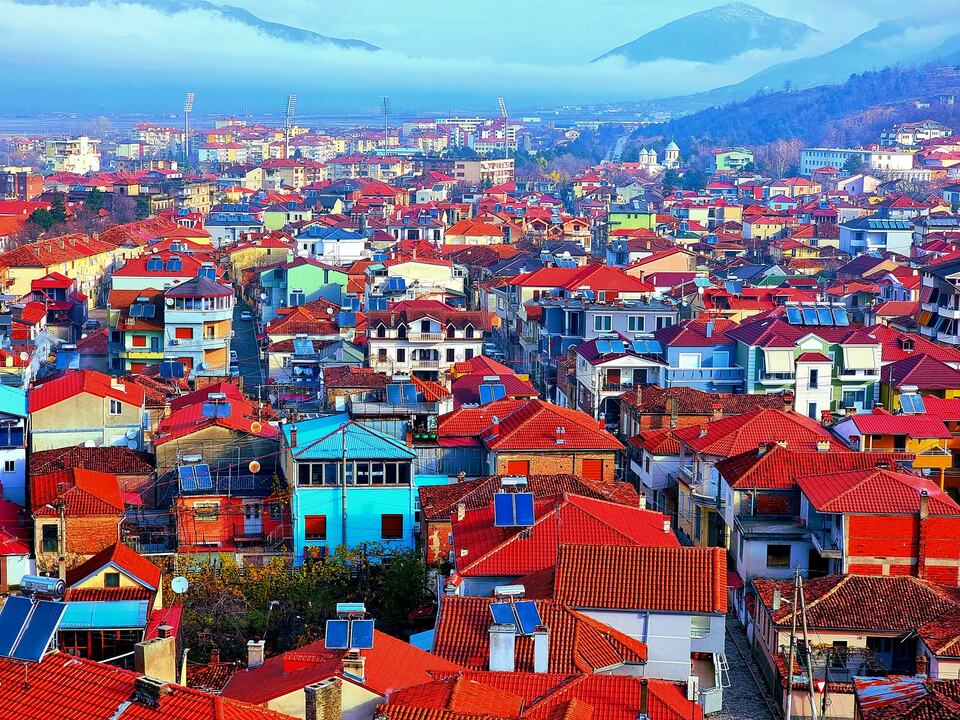

This tour through Eastern Europe takes you from Austria via the little-known Baltic and Balkan countries to Turkey, Greece and Albania. Enjoy the popular highlights and hidden gems including modern cities with historic old towns, fairytale castles perched on the edge of glittering lakes, cathedrals and monasteries, mosques and citadels, hot springs and sun-soaked Mediterranean islands, beautiful beaches and towering mountain ranges – there’s so much to see on this Eastern European odyssey.
DISCOVERY HIGHLIGHTS
Arriving in Austria and we will pick you up at the airport and we will transfer to the hotel. Vienna is a city world away from any other found in Europe. Overnight in Vienna. (AUSTRIA)
After breakfast we will walk in the The`old town`, or city center of Vienna, where we will visit: the Stephansdom and Stephansplatz at the centre of a bull`s eye. It is encircled by the Ringstrasse (Ring Road), a grand boulevard constructed along the old city walls, which were torn down at the end of the 19th century. Along the Ringstrasse are many famous and grand buildings, including the Rathaus, the Austrian Parliament, the Hofburg Palace, the Natural History Museum, the Museum of Art History (Kunsthistorisches Museum), and the State Opera House. Overnight in Vienna. (AUSTRIA)
After breakfast we will travel to Slovakia. Bratislava, the capital of Slovakia, is set along the Danube River by the border with Austria and Hungary. It’s surrounded by vineyards and the Little Carpathian Mountains, crisscrossed with forested hiking and cycling trails. The pedestrian-only, 18th-century old town is known for its lively bars and cafes. Perched atop a hill, the reconstructed Bratislava Castle overlooks old town and the Danube. In Bratislava we will visit, Bratislava Castle, St. Martin’s Cathedral, Michael’s Gate, The Blue Church, Presidential Palace, Man at Work. Overnight in Bratislava. (SLOVAKIA)
After breakfast we depart from Bratislava for one of the most popular destinations in Central Europe, Budapest, Hungary’s stylish capital is known as the ‘City of Spas’ for its abundance of natural thermal springs. With a host of historical sights, buzzing nightlife and unique attractions, Budapest is a favorite for many travelers visiting the region. Overnight in Budapest. (HUNGARY)
After breakfast we will visit Budapest. Straddling the Danube River, the city is comprised of two very different historic cities, Buda on the west bank and Pest on the east bank. Highlights here include Castle Hill, Matthias Church, Fisherman’s Bastion, the Liberation Monument, the fabulous St Stephen’s Basilica and the much-photographed Parliament Building. An evening river cruise is an excellent way to see the parliament lit up at night. The perfect place to relax after a day of sightseeing is in a traditional bath. The Szechenyi Medicinal Baths are one of the city’s more famous Neo Baroque-style baths with indoor and outdoor pools, thermal pools, saunas and massages in a beautiful setting. Don’t leave Budapest without sampling the famous goulash, a stew made from meat and vegetables and one of the most known Hungarian dishes. After dinner a great way to spend the evening is in one of the famous ruin bars, once abandoned buildings and now a symbol of Budapest, these bars are unique and full of life and perfect for experiencing life as the locals do. Overnight in Budapest. (HUNGARY)
After breakfast we will travel to Eger. With a number of historic sites such as the castle, cathedral, and the northernmost minaret in Europe, Eger is a wonderfully quaint town and the perfect contrast from the bustling capital of Budapest. Best known for its production of the famous “Bulls Blood” red wine, Eger is a large producer of Hungarian wine and you will have ample opportunity to sample some of Hungary’s finest. Spend an afternoon exploring the “Valley of the Beautiful Women”, a collection of wine cellars where you can sample the unique blends of local wines and speak with the producers. After a 91 year long Turkish rule in the 15th century, Eger has an abundance of Ottoman influence and beautiful architecture that can be seen as you explore on foot. Overnight in Eger. (HUNGARY)
After breakfast we will explore the fascinating Maramures region in North-western Romania, home to many villages where century-old traditions are still part of daily life. We will observe a pottery demonstration, visit a traditional watermill and make a stop at the very peculiar ‘Merry Cemetery’ of Sapânta, so called because the gravestones are painted in bright colors, hand-carved out of oak and adorned with an image of the deceased and a humorous epitaph in the local vernacular. This is a full day of exploring the Maramures and we will arrive to the guesthouse to enjoy a traditional dinner. Overnight in Maramures. (ROMANIA)
After breakfast we will visit the village of Barsana, where there is a thriving local tradition of woodcarving, with picturesque wooden houses fronted by giant, ornately-carved gates. There is also a monastery that offers great views over the Izei valley, where people still farm using traditional techniques. We also tour some of the beautiful UNESCO listed wooden churches of the region that are well-known for their characteristic high roofs and tall, pointed steeples. In the afternoon we head to Sighisoara. Located in the historic region of Transylvania, it was once a Saxon settlement established in the 12th century. Recognized by UNESCO as a World Heritage Site, the citadel has a very well-preserved old town with a clock tower rising 64 meters above the city. Also, worth visiting is the Orthodox Cathedral and Cornesti Church. Overnight in Sighsioara. (ROMANIA)
Today you are free to explore and enjoy Sighisoara. You could take a guided tour of the Old Town, check out the unique Torture Museum or visit Dracula’s House. Overnight in Sighisoara. (ROMANIA)
After breakfast surrounded on three sides by the Carpathian Mountains, Brașov was a perfect place for a medieval settlement and much of the Old City, founded by the Teutonic Knights in 1211, has been restored. You can visit Râșnov Castle, the Brașov Citadel or wander up Rope Street, the narrowest street in Europe. Brașov also provides a great base for exploring the surrounding countryside of the Transylvania region, where the air is fresh and the people friendly. On our way to Brașov we make stops at two historic and important churches, Viscri and Prejmer fortified churches. Overnight in Brasov. (ROMANIA)
After breakfast we visit the nearby Bran Castle which is known as ‘Dracula’s Castle’ and is (supposedly) said to have been the home of Vlad the Impaler. The rest of the afternoon is free for you to enjoy Brașov. Overnight in Brasov. (ROMANIA)
After breakfast we will explore the beautiful Pele’s Castle, an impressive structure which is sure to take your breath away. We then head to Bucharest where you will have free time to explore the area and discover the contrasts of Romania’s cultural capital. The architecture here is an eclectic mix of historical, communist period and modern styles and it even has its own Arc de Triumphs. Bucharest also boasts the world’s second largest building, the Palace of Parliament, built under the communist regime. Overnight in Bucharest. (ROMANIA)
After breakfast we across the border into the Bulgarian city of Veliko Tarnovo, famous as the historical capital of the Second Bulgarian Empire. Built on three hills, the city offers some great views of the surrounding churches and old imperial residences rising amidst the meanders of the Yantra River. On Tsarevets Hill are the palaces of the Bulgarian emperors and the Patriarchate, the Patriarchal Cathedral, and also a number of interesting cultural institutions such as the Archaeological Museum and the Museum of the Bulgarian Revival and the Constituent Assembly. Overnight in Veliko Tarnovo. (BULGARIA)
After breakfast we will depart for our next destination, Sofia. Bulgaria’s capital, Sofia offers a wealth of cultural entertainment, including Byzantine churches, museums full of ancient archaeological treasures, towering monuments and numerous mineral baths adjacent to the magnificent Mount Vitosha. Laid back and cosmopolitan, Sofia offers a thriving and diverse street life, including open-air cafes, busy markets such as the famous Ladies’ Market, rattling trams and buskers all adding to the ambience. Overnight in Sofia. (BULGARIA)
Fee time in Sofia. Overnight in Sofia. (BULGARIA)
After breakfast we will travel to Plovdiv. Plovdiv is one of the oldest cities in Europe. It is the oldest continually inhabited city in Europe going back 8000 years. The town is small and easy to walk around. Places to see include the Roman Amphitheatre, St Marina church and a mosque leftover from the Ottoman Empire. Each step you take in this town opens up another piece of history. While the seven tall hill that used to overlook the town have been reduced to just three, it is possible to walk the hills and the best time to do this is at sunset. Overnight in Plovdiv. (BULGARIA)
After breakfast we will drive to Turkey. Free afternoon in Istanbul. Overnight in Istanbul. (TURKEY)
After breakfast we will visit Istanbul. Istanbul is an enchanting fusion of East and West. Narrow alleys are flanked by wooden Ottoman houses while a nearby funky restaurant and bar strip in the down-town area pumps out Turkish pop. There are many great places to explore including, but not limited to, the Blue Mosque, St Sophia and the Grand Bazaar. The Blue Mosque, also known as the Mosque of Sultan Ahmet, is nearly 400 years old and still an active mosque that non-Muslims can visit for free outside of the five daily prayers. St Sophia (Hagia Sophia) was built 1,500 years ago and was the largest enclosed space in the world. The Grand Bazaar (Kapali Carsi) is the oldest and largest closed bazaar in the world, housing around 3000 shops within 61 alleyways. It used to be the city’s main trading center of ceramics, jeweler and leather goods. Overnight in Istanbul. (TURKEY)
After breakfast we will drive to Alexandroupoli is a city in Greece and the capital of the Evros regional unit in East Macedonia and Thrace. It has 57,812 inhabitants and is the largest (in size and population) city in Thrace. It is an important port and commercial center of northeastern Greece. The zone of Alexandroupolis, as well as the whole area from the Evros Delta to Lake Vistonida and the foothills of Rhodope Mountains, was inhabited by Cicones. Cicones were Thracian people, with whom, according to mythology, Odysseus and his comrades clashed on their return from Troy. Alexandroupoli benefits from its position at the centre of land and sea routes connecting Greece with Turkey. Landmarks in Alexandroupoli include the city’s lighthouse in the port, the archaeological sites of the Mesimvris Zone, the city’s waterfront (the center of commercial activity), the Ethnological Museum of Thrace, the thermal springs (Hana) of Traianoupoli, the cave of the Cyclops Polyphemus. Overnight in Alexandropils. (GREECE)
After an early breakfast we depart for Thessaloniki. Thessaloniki is Greece’s second major economic, industrial, commercial and political center, and a major transportation hub for the rest of southeastern Europe; its commercial port is also of great importance for Greece and the southeastern European hinterland. The city was founded around 315 BC by the King Cassander of Macedon, on or near the site of the ancient town of Therma and 26 other local villages. He named it after his wife Thessalonike, a half-sister of Alexander the Great and princess of Macedon as daughter of Philip the second. Under the kingdom of Macedon, the city retained its own autonomy and parliament and evolved to become the most important city in Macedon. After the fall of the kingdom of Macedon in 168 BC, Thessalonica became a free city of the Roman Republic under Mark Antony in 41 BC. It grew to be an important trade-hub located on the Via Egnatia, the road connecting Dyrrhachium with Byzantium. In Thessaloniki we will visit, the White tower, Αno Poli, Ladadika (the nightlife hotspot), Τhe Archaeological Museum, The Arch of Galerius. Overnight in Thessaloniki. (GREECE)
After breakfast we will drive and enter to Albania. After breakfast in the morning more visits in Korca starting with the well-stocked Museum of Medieval Art, the Mirahori mosque one of the oldest in Albania, the reconstructed old bazaar and the Church at Mborje, built in the 14th century also one of the oldest in the Balkans. Overnight in Korce. (ALBANIA)
After breakfast we travel in Ohrid. Ohrid is notable for once having had 365 churches, one for each day of the year, and has been referred to as a “Jerusalem (of the Balkans)”. The city is rich in picturesque houses and monuments and tourism is predominant. The monastery of St Naum was established in the Bulgarian Empire in the year 905 by St Naum of Ohrid himself. St Naum is also buried in the church. Since the 16th century a Greek school had functioned in the monastery. The Lake of Ohrid, the ancient Greek Lacus Lychnitis, whose blue and exceedingly transparent waters in antiquity gave to the lake its Greek name; it was still called so occasionally in the Middle Ages. It was located along the Via Egnatia, which connected the Adriatic port Dyrrachion (present-day Durres) with Byzantium. Then we drive for 25 km to the city of Ohrid. In Ohrid we will visit the Old Town, Samuel Castle, Saint John at Kaneo, City Center, Lake Ohrid. Overnight in Ohrid. (NORTH MACEDONIA)
After breakfast we drive to Tirana, Capital of Albania but before we stop to Elbasan, which is one of the largest cities in Albania, it is located on the Shkumbini River. In August 2010 archaeologists discovered two Illyrian graves near the walls of the castle of Elbasan. In the second century BC, a trading post called Mansio Scampa near the site of modern Elbasan developed close to a junction of two branches of an important Roman road, the Via Egnatia, which connected the Adriatic Coast with Byzantium at the Hellespont. Overnight in Tirana. (ALBANIA)
Afterwards take a driven tour of the major sites of Tirana, including the colorful buildings the Albanian capital is now recognized for. The dull grey communist buildings have been transformed into modern art canvases through splashes of bright colors and abstract shapes. It is considered an ingenious way of uplifting the facades and the moods of the inhabitants. In the afternoon we will continue to Dajti Mountain by cable car. This is a cable car service which travels for about 300 m to the top of Dajti Mountain and gives you a spectacular view of the beautiful capital city of Tirane. Overnight in Tirana. (ALBANIA)
After breakfast we will transfer you to the airport of Tirana. End of our service.
Tour Itinerary: Eastern Europe and the Balkans
Fill up the form below to tell us what you're looking for



Register now! We will send you best offers for your trip.
WhatsApp us
